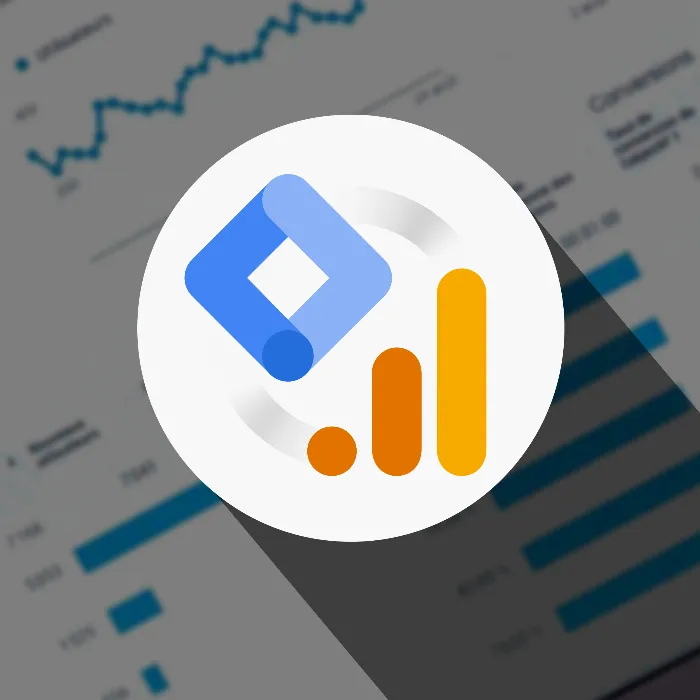The organization of data and tracking elements is crucial for an efficient use of Google Analytics. A structured folder structure helps you to keep track and optimize the analysis of your data. In this guide, you will learn how to effectively create folders and their structures to systematically manage your tags, triggers, and variables.
Key takeaways
- Effective naming of tags and triggers is crucial.
- Folders can be structured by tools or specific pages.
- Systematization improves clarity and maintainability.
Step-by-step guide
First, select the "Folders" tab on the left side of the user interface. Here you can view and get to know the currently existing elements. This area shows you all variables, triggers, and tags. In your example, there are currently nine elements that you will now examine closely.
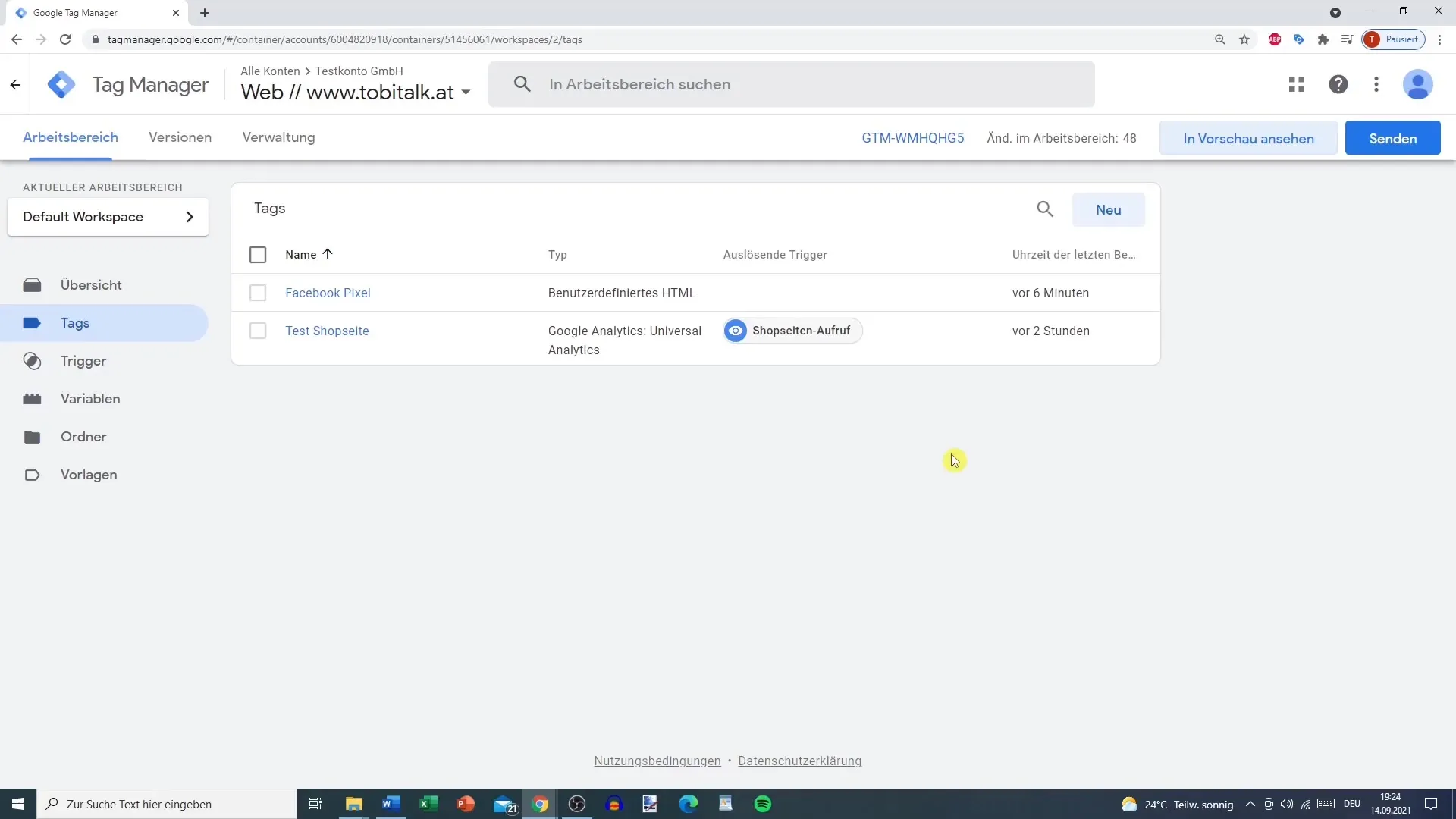
To increase clarity, it is advisable to sort the elements by type. You can do this easily by clicking on the type. This way, you can switch, for example, between tags and variables and adjust the perspective to achieve a better structure. In this view, you can decide whether you want to see the tags or the variables first, depending on your needs.
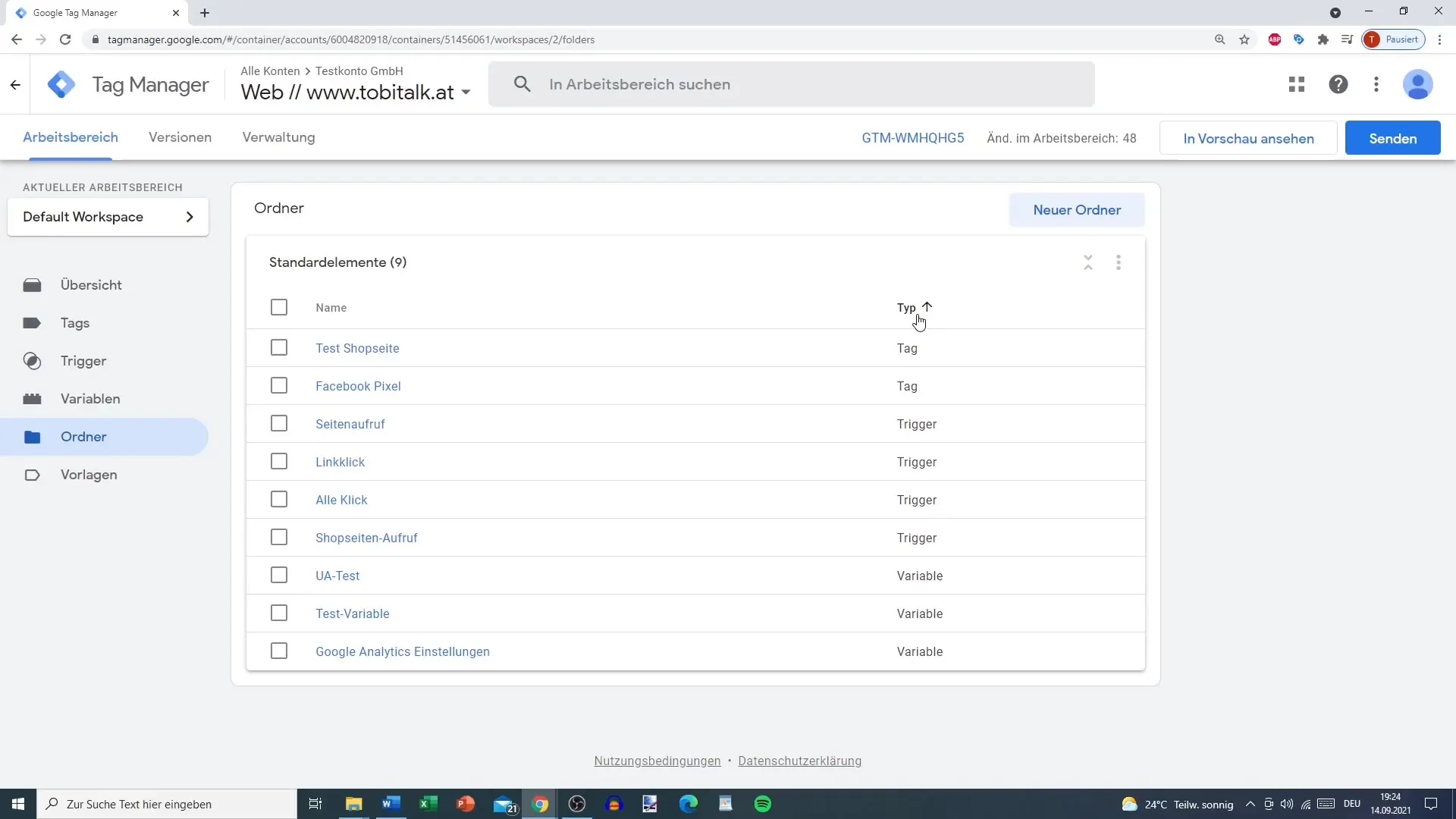
To significantly improve something, it would be advisable to carefully name your tags from the beginning. For example, when naming a tag for a shop page, change the name so that it is clear to you and you can see at a glance what this tag is used for. A good method is to use abbreviations: use the initials of the tool, such as "ua" for Universal Analytics, followed by a hyphen and a brief description of the activity, such as "Pageview".
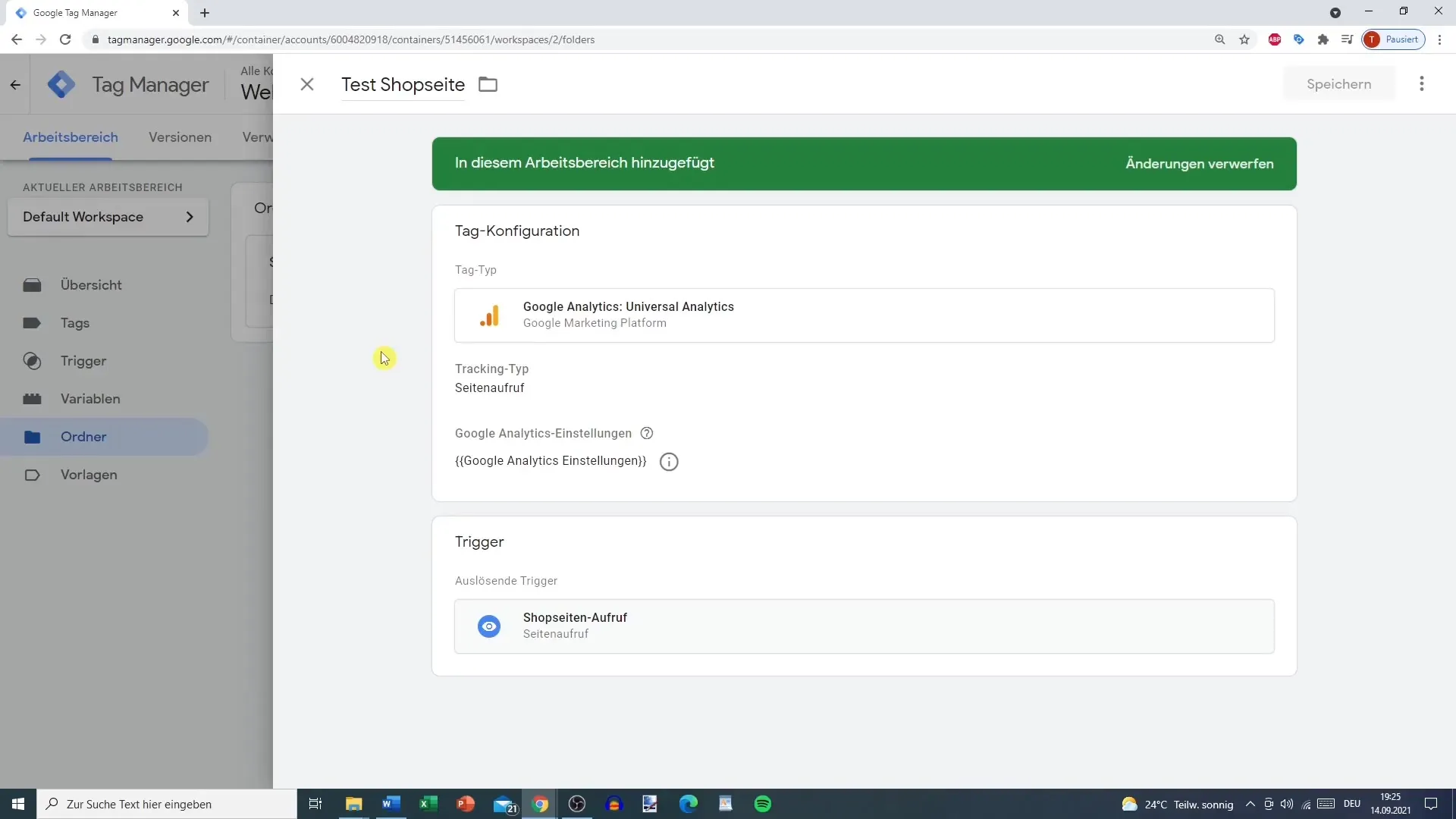
After naming, it is recommended to specify the exact location of use. Specify the name of the page or perhaps even the entire domain, if that makes sense to you. This way, you always know on which page the tag or trigger is used and you never find yourself hesitating.
Another element to create order is the ability to create new folders. Click on "New Folder" in the top area. You can name the folder, for example, "Universal Analytics". The organization should help you gather everything related to this tool in one place.
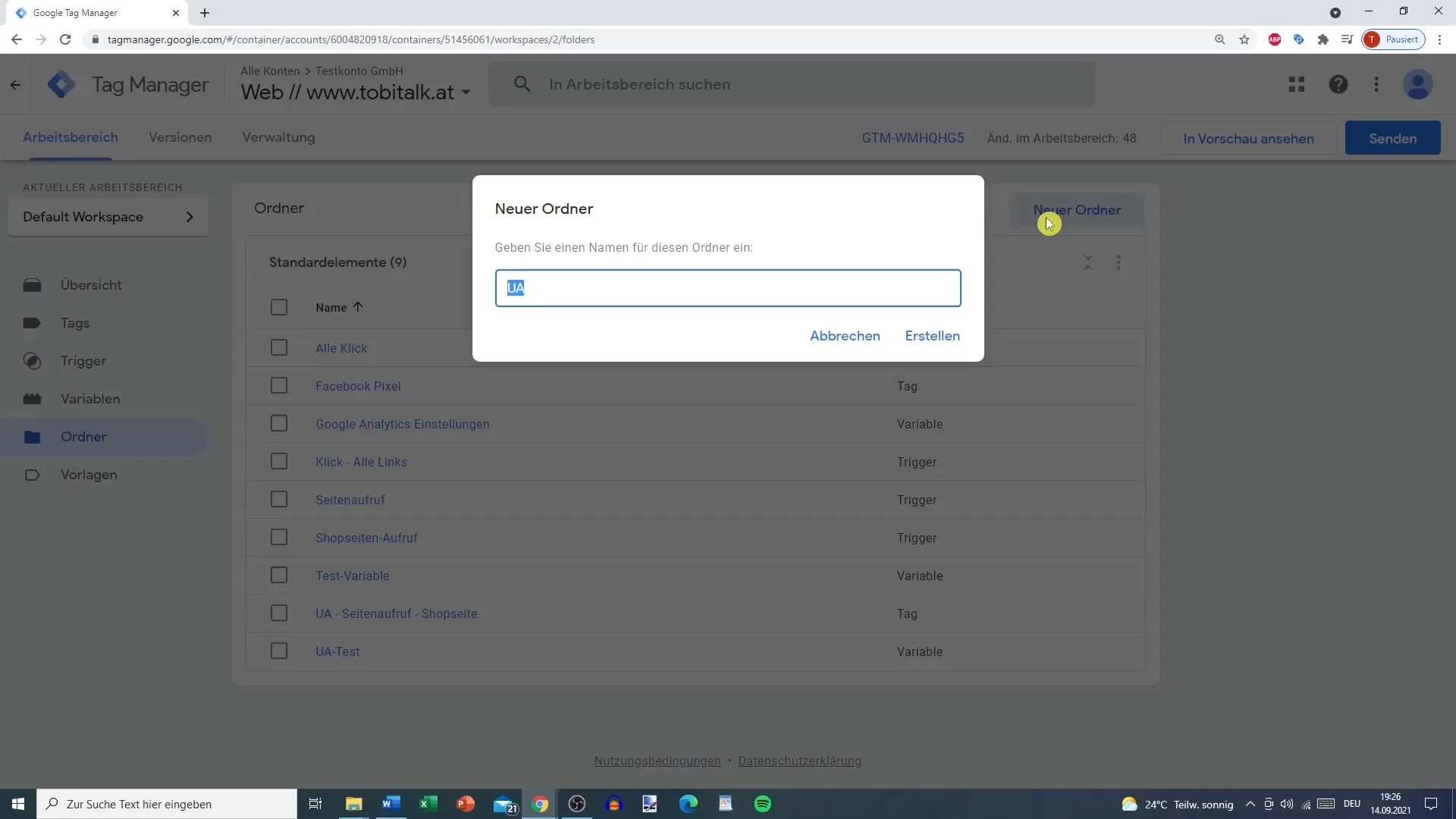
You can also sort your elements by specific tools: Everything related to Universal Analytics can go into one folder, while elements for other marketing tools like Facebook Pixel can be sorted into a separate folder. This contributes to clarity and enables you to easily navigate between your tracking elements.
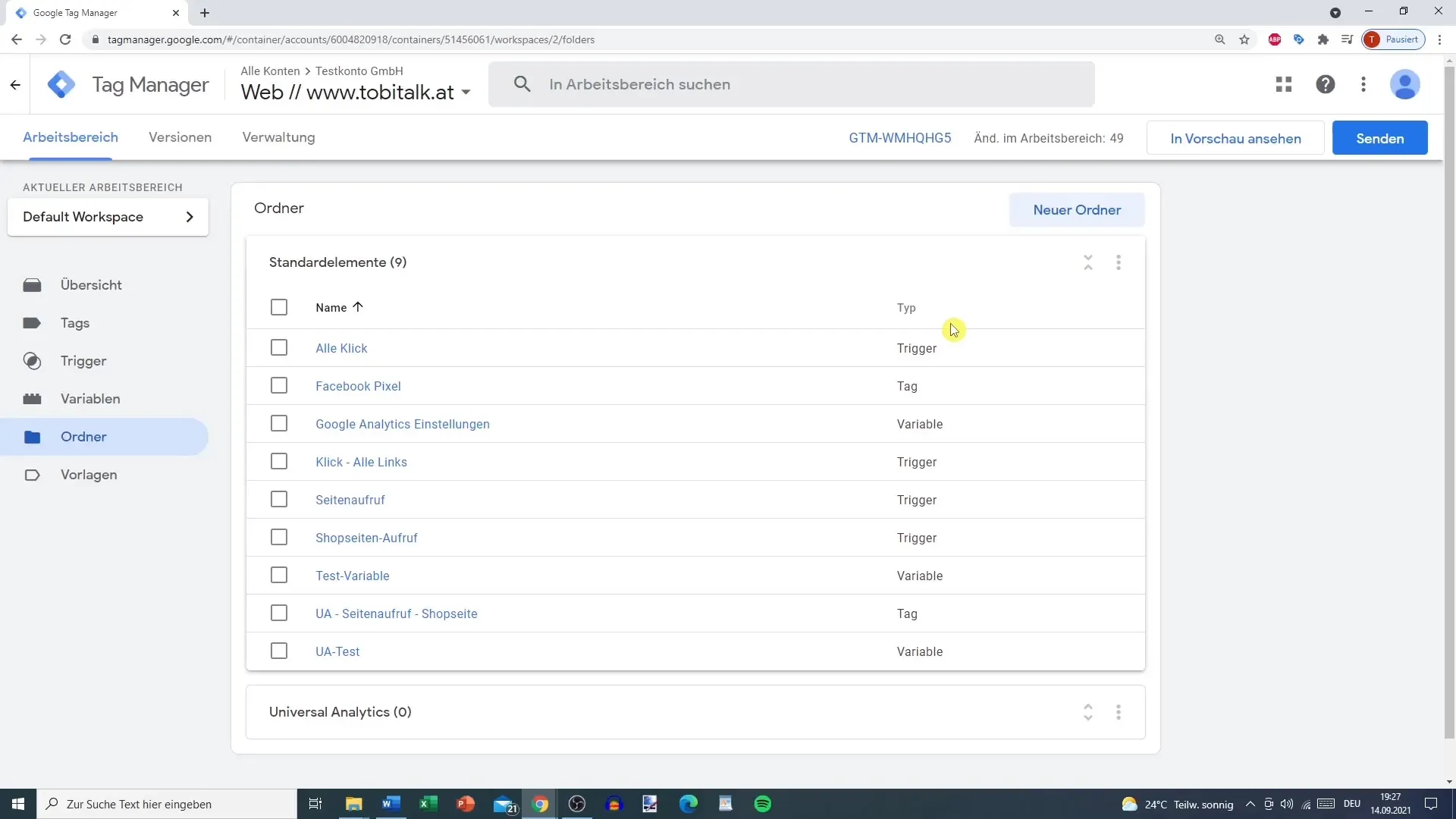
An alternative structure could be to separate the elements by their respective function. It might be more sensible to organize tags and triggers separately. However, this may lose its advantage if you already see it in the view listed.
To achieve a more specific organization, consider sorting the elements by pages on the website. For example, if you have tags for a shop page view and a universal page view, you can sensibly place these tags in a "Shop Page" folder.
To practically apply the tags, you have the option to move these tags to the newly created folder. If you wish, you can simply drag these tags into the "Universal Analytics" folder or, if necessary, create a new specific folder for the shop page.
A useful function is to create a new folder from the selection by clicking on the desired tags and then selecting the option. This way, a folder is automatically created from the chosen ones, gathering all related elements under it. This allows you to create order and quickly see the structure.
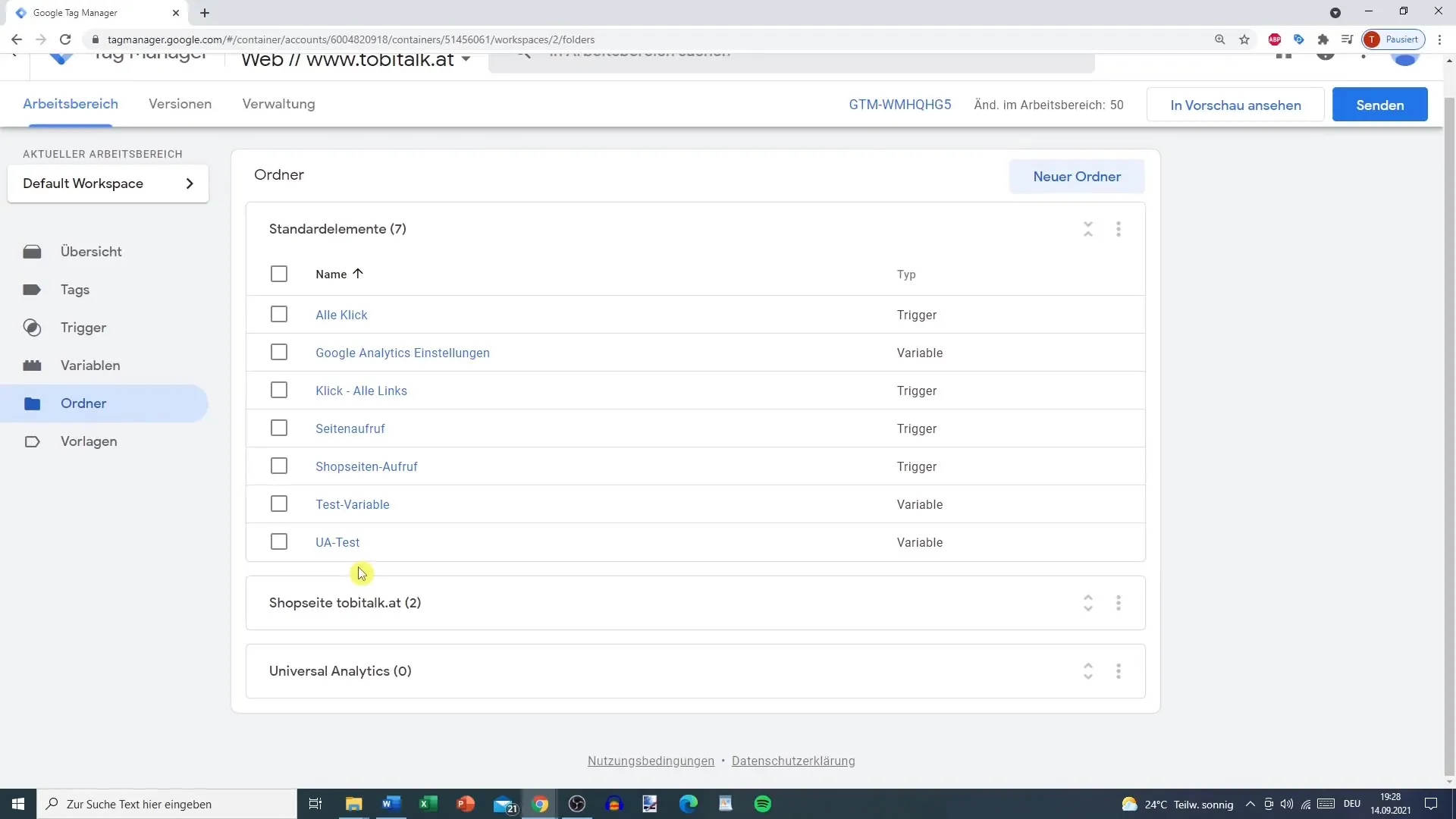
If you keep this in mind, you can continue to decide whether you want to organize the folders by tools or by specific pages on your website. Ultimately, it's up to you which structure you prefer, as long as you theoretically decide that these basic principles work.
Summary
The correct organization of tags, triggers, and variables in Google Analytics is crucial for the manageable use of the analysis tools. By using logical naming and setting up folders by pages or tools, you achieve maximum efficiency.
Frequently Asked Questions
How do I sort my tags and triggers?Click on the type and choose between tags and variables.
How do I create a new folder?Click on "New Folder" at the top and name it descriptively.
What is the best method for naming tags?Use abbreviations and describe the function of the tag, followed by its scope.
Can I create folders from existing tags?Yes, by selecting multiple tags and choosing the option "Create folder from selection."
How is the best way to organize your folders?This should be done based on your needs, either by tools or specific pages.
